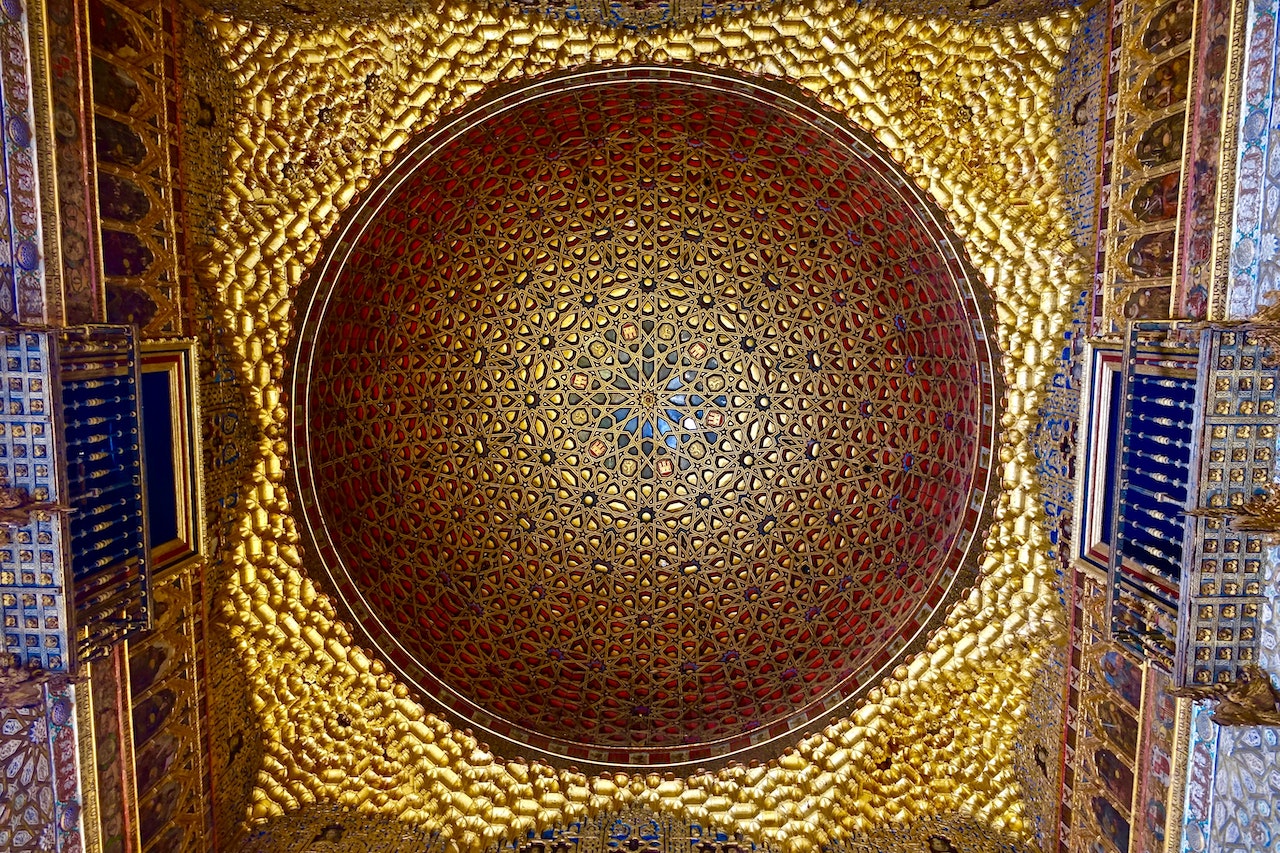The Influence Of Cultural Identity On Contemporary Architectural Styles - Celebrating Diversity Through Architecture
The influence of cultural identity on contemporary architectural styles is influenced by various factors throughout history, including cultural identity. Cultural identity refers to the unique characteristics that define a particular culture or group of people, including their beliefs, customs, and values.
Author:George EvansMar 15, 202314.6K Shares486.8K Views

The influence of cultural identity on contemporary architectural stylesis influenced by various factors throughout history, including cultural identity. Cultural identity refers to the unique characteristics that define a particular culture or group of people, including their beliefs, customs, and values.
In contemporary architecture, cultural identity continues to play a significant role in shaping the styles and designs of buildings.
This essay explores the influence of cultural identity on contemporary architectural styles, highlighting various examples from around the world.
The Role Of Cultural Identity In Architecture
Cultural identity has been a crucial factor in shaping architecture for centuries. Architects and designers have long been inspired by the unique characteristics of different cultures, which they incorporate into their designs.
For example, in ancient Egypt, architecture was influenced by the country's religious beliefs and culture. The Egyptians built temples, tombs, and pyramids to reflect their spiritual beliefs and honor their gods.
Similarly, in ancient Greece, architecture was influenced by the country's cultural identity. The Greeks built temples and other public buildings that reflected their democratic values and love of beauty. The most famous examples of Greek architecture are the Parthenon in Athens and the Temple of Zeus in Olympia.
Today, cultural identity continues to play a significant role in shaping contemporary architectural styles. Architects and designers draw inspiration from the unique characteristics of different cultures, incorporating them into their designs.
This helps create buildings that reflect the local culture and identity while also being functional and aesthetically pleasing.
Examples Of Cultural Identity In Contemporary Architecture
There are numerous examples of how cultural identity has influenced contemporary architecture around the world. Some of these examples are discussed below.
Islamic Architecture
Islamic architecture is heavily influenced by the cultural identity of the Muslim world. Islamic architecture is characterized by its intricate geometric patterns, calligraphy, and the use of domes and arches. The most famous examples of Islamic architecture are the Alhambra in Spain, the Taj Mahal in India, and the Blue Mosque in Istanbul.
The Alhambra in Spain is a stunning example of Islamic architecture. The palace complex features intricate geometric patterns and calligraphy, reflecting the cultural identity of the Muslim world.
The use of arches and domes is also a hallmark of Islamic architecture, as seen in the Alhambra's many courtyards and halls.
Scandinavian Architecture
Scandinavian architecture is heavily influenced by the cultural identity of the Nordic countries. Scandinavian architecture is characterized by its simplicity, functionality, and use of natural materials.
The most famous examples of Scandinavian architecture are the Nordic Pavilion at the Venice Biennale and the Oslo Opera House in Norway.
The Nordic Pavilion at the Venice Biennale is a stunning example of Scandinavian architecture. The pavilion features a simple, functional design that reflects the Nordic countries' cultural identity.
The use of natural materials, such as wood and stone, also reflects the Nordic countries' close relationship with nature.
Japanese Architecture
Japanese architecture is heavily influenced by the country's cultural identity. Japanese architecture is characterized by its simplicity, minimalism, and use of natural materials. The most famous examples of Japanese architecture are the Katsura Imperial Villa in Kyoto and the Teshima Art Museum.
The Katsura Imperial Villa in Kyoto is a stunning example of Japanese architecture. The villa features a simple, minimalist design that reflects the Japanese cultural identity. The use of natural materials, such as wood and stone, is also a hallmark of Japanese architecture.
The Influence Of Cultural Identity On Contemporary Architectural Styles
Cultural identity plays a crucial role in contemporary architecture. Incorporating cultural identity into the design process helps create buildings that reflect the local culture and identity while also being functional and aesthetically pleasing. This can help create a sense of place and belonging for the local community and visitors.
Sense Of Place
One of the key benefits of incorporating cultural identity into architecture is creating a sense of place. Buildings that reflect the local culture and identity help create a connection between people and their environment. This connection can be seen in the way people interact with the building and the surrounding area.
For example, the Sydney Opera House is a building that reflects the local cultural identity of Australia. The building's unique design, inspired by the sails of a ship, has become an iconic symbol of Sydney and Australia.
The Opera House has also become a cultural hub, hosting a range of events that reflect the local culture and identity.
Sustainability
Incorporating cultural identity into architecture can also promote sustainability. Buildings that reflect the local culture and identity often use local materials and building techniques, which can help reduce the environmental impact of construction.
Additionally, buildings that reflect the local culture and identity are often designed with the local climate in mind, helping to reduce energy consumption and promote sustainability.
For example, the Earth House Estate in Switzerland is a collection of buildings that reflect the local cultural identity of the region.
The buildings are made from natural materials, such as earth and clay, and are designed to blend in with the surrounding landscape. The use of natural materials and building techniques has helped reduce the environmental impact of construction and promote sustainability.
Challenges In Incorporating Cultural Identity Into Architecture
While incorporating cultural identity into architecture can have many benefits, there are also challenges. One of the main challenges is balancing the need for functionality with the desire to reflect the local culture and identity.
Architects and designers must create buildings that are functional and meet the needs of the people who will use them while also reflecting the local culture and identity.
Another challenge is the potential for cultural appropriation. Cultural appropriation occurs when one culture adopts elements of another culture without proper respect or understanding.
Architects and designers must be careful to avoid cultural appropriation when incorporating cultural identity into their designs.
Balancing Functionality And Cultural Identity
Balancing functionality and cultural identity can be a difficult task for architects and designers. Buildings must be designed to meet the needs of the people who will use them while also reflecting the local culture and identity. This can be challenging, as cultural identity can sometimes conflict with functionality.
For example, traditional buildings in some cultures may not have the same level of insulation or ventilation as modern buildings. While these buildings may reflect the local culture and identity, they may not be as comfortable or functional as modern buildings.
Architects and designers must find a way to balance the desire to reflect the local culture and identity with the need for functionality.

Architecture & Cultural Identity - Inspiration from Indigenous Heritage.
Avoiding Cultural Appropriation
Avoiding cultural appropriation is another challenge when incorporating cultural identity into architecture. Cultural appropriation occurs when one culture adopts elements of another culture without proper respect or understanding. This can be problematic, as it can lead to the erasure of the original culture and identity.
Architects and designers must be careful to avoid cultural appropriation when incorporating cultural identity into their designs. This means taking the time to understand the local culture and identity and working with local communities to ensure that the design is respectful and appropriate.
People Also Ask
What Is Cultural Appropriation?
Cultural appropriation occurs when one culture adopts elements of another culture without proper respect or understanding.
Why Is It Important To Avoid Cultural Appropriation When Incorporating Cultural Identity Into Architecture?
It's important to avoid cultural appropriation when incorporating cultural identity into architecture to prevent the erasure of the original culture and identity.
What Is The Earth House Estate In Switzerland?
The Earth House Estate in Switzerland is a collection of buildings that reflect the local cultural identity of the region and are made from natural materials, such as earth and clay.
What Is The Sydney Opera House?
The Sydney Opera House is a building that reflects the local cultural identity of Australia and has become an iconic symbol of Sydney and Australia.
Conclusion
The influence of cultural identity on contemporary architectural styles plays a significant role in shaping contemporary architectural styles. Architects and designers draw inspiration from the unique characteristics of different cultures, incorporating them into their designs.
This helps create buildings that reflect the local culture and identity while also being functional and aesthetically pleasing.
Incorporating cultural identity into architecture can have many benefits, including creating a sense of place, promoting sustainability, and reflecting the local culture and identity. However, there are also challenges, including balancing functionality with cultural identity and avoiding cultural appropriation.

George Evans
Author
George Anderson, an exceptional architectural designer, envisions and brings to life structures that transcend the realm of imagination. With an unwavering passion for design and an innate eye for detail, George seamlessly blends form and function, creating immersive spaces that inspire awe.
Driven by a deep appreciation for the interplay of space, light, and materials, George's innovative approach redefines the possibilities of architectural design. His visionary compositions leave an indelible mark, evoking a sense of wonder and transforming the built environment.
George Anderson's transformative designs and unwavering dedication continue to shape the architectural landscape, pushing the boundaries of what is possible and inspiring generations to come.
Latest Articles
Popular Articles
